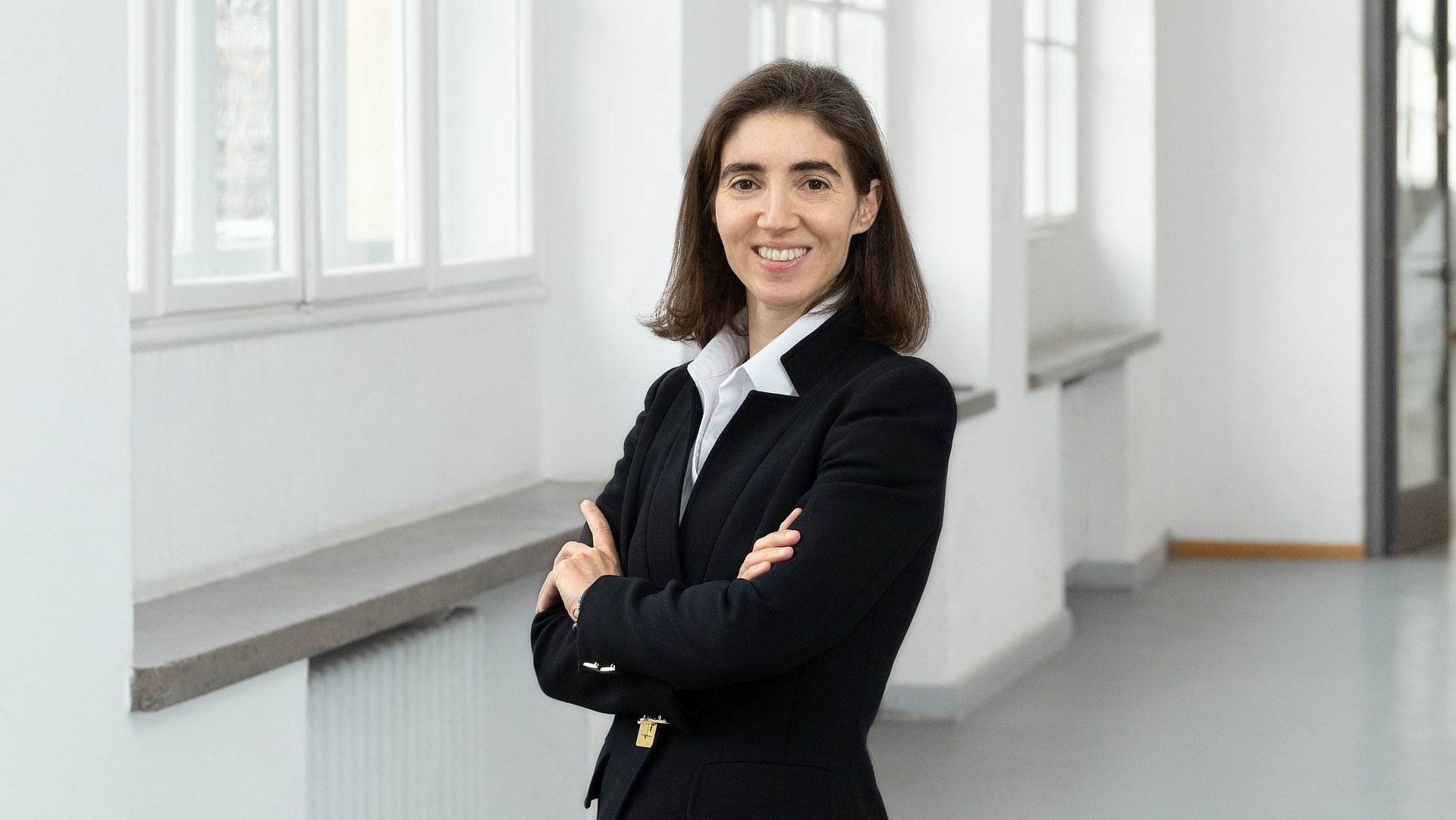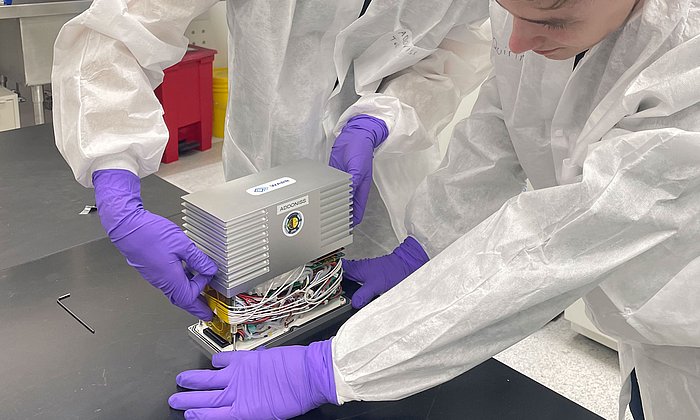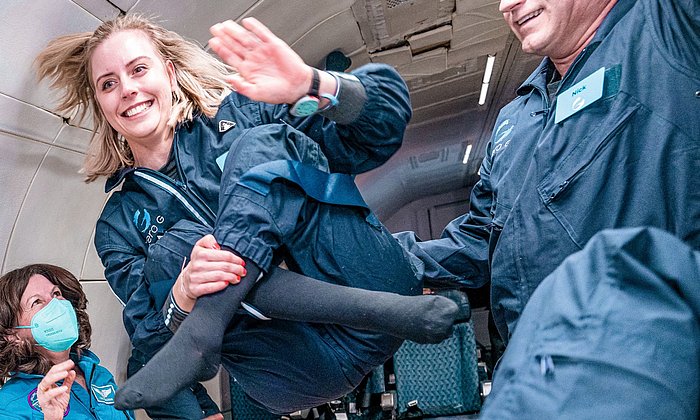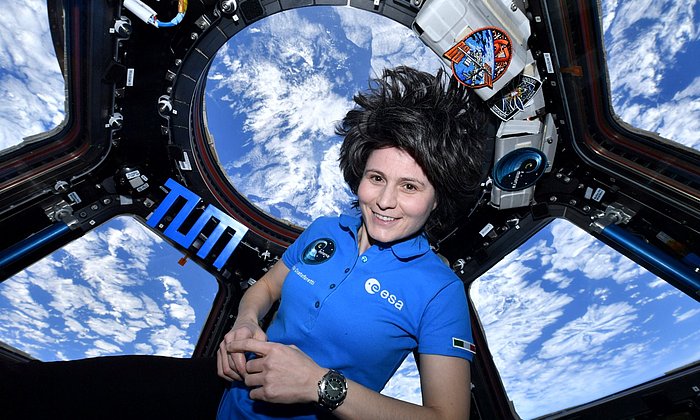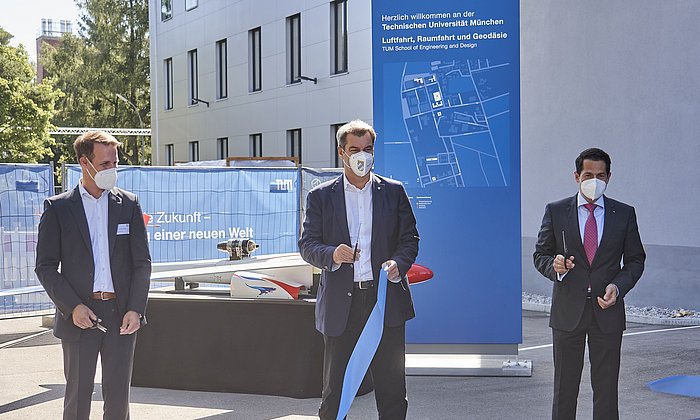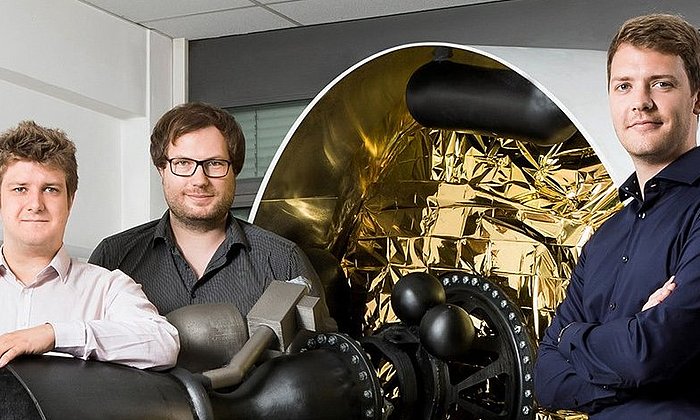NewIn: Chiara Manfletti
Shaping the future of space travel sustainably
Chiara Manfletti was not always sure she would choose a career in engineering. "I could imagine many different paths," she says: "marine biology, journalism, veterinary medicine or law. In the end, it was the prospect of solving problems hands-on that attracted her to engineering, but the direction was still open. "One day, I was watching ESA's Cassini-Huygens mission on TV with my parents and was fascinated by the probe's landing on Titan. After that, I was sure that aerospace was what I wanted to do.“
European high-flyer
Today, few people represent the spirit of European space more than Chiara Manfletti: she studied aeronautical engineering in London - her Master's degree from Imperial College was followed by one from the International Space University in Strasbourg and a PhD from RWTH Aachen University. She then worked as a research engineer in rocket propulsion at DLR before moving to ESA, where she headed the policy and programmes coordination department. During her time at ESA, she was also involved in the creation of the Portuguese National Space Agency and became its first president.
In 2022, she was appointed to TUM. "Universities - also in Europe - are increasingly becoming incubators for new ideas and start-ups," she says. "I believe that TUM offers an optimal environment for both dimensions: for interdisciplinary research to achieve real scientific breakthroughs, and an ecosystem for swift technology transfer."
Chiara Manfletti also greatly appreciates the contact with students: "Working with students is very inspiring. I enjoy giving back my experience to them and also teaching them how to make the most of their knowledge and their energy," she says. "When I've had to make decisions in my career, I've never really asked myself 'can I do this,' but 'do I want to do this,' and this is something I want to pass on to the students."
Thinking sustainability and economics together
Chiara Manfletti is convinced that in order to make space travel more sustainable, economics must be included in the equation. "Sustainability and economics cannot be separated in space travel," she says. "There can be answers to climate change from space, for example through earth observation services, which are the basis for important research - but which also have an economic dimension."
At her chair, she is researching environmentally friendly space propulsion systems, including water electrolysis and the use of oxygen and methane as fuels. With her start-up company Neuraspace, she is also working on ways to minimize and avoid space debris. The recycling and production of certain materials directly in space is also becoming an important issue, according to Chiara Manfletti: "We can't keep bringing resources from Earth to space forever, we need to establish a kind of circular economy there," she says. "For a sustainable future of space travel, we need to explore things that today sound a bit like science fiction."
- The Chair of Space Propulsion and Mobility, headed by Prof. Chiara Manfletti, conducts research into innovative, intelligent and sustainable propulsion and operations concepts for rockets and satellites.
- The chair is funded by Hightech Agenda Bavaria.
- All episodes NewIn.
Technical University of Munich
Corporate Communications Center
- Andreas Schmidt
- presse@tum.de
- Teamwebsite
Contacts to this article:
Prof. Dr.-Ing. Chiara Manfletti
Chair of Space Propulsion and Mobility
TUM School of Engineering and Design
Technical University of Munich
